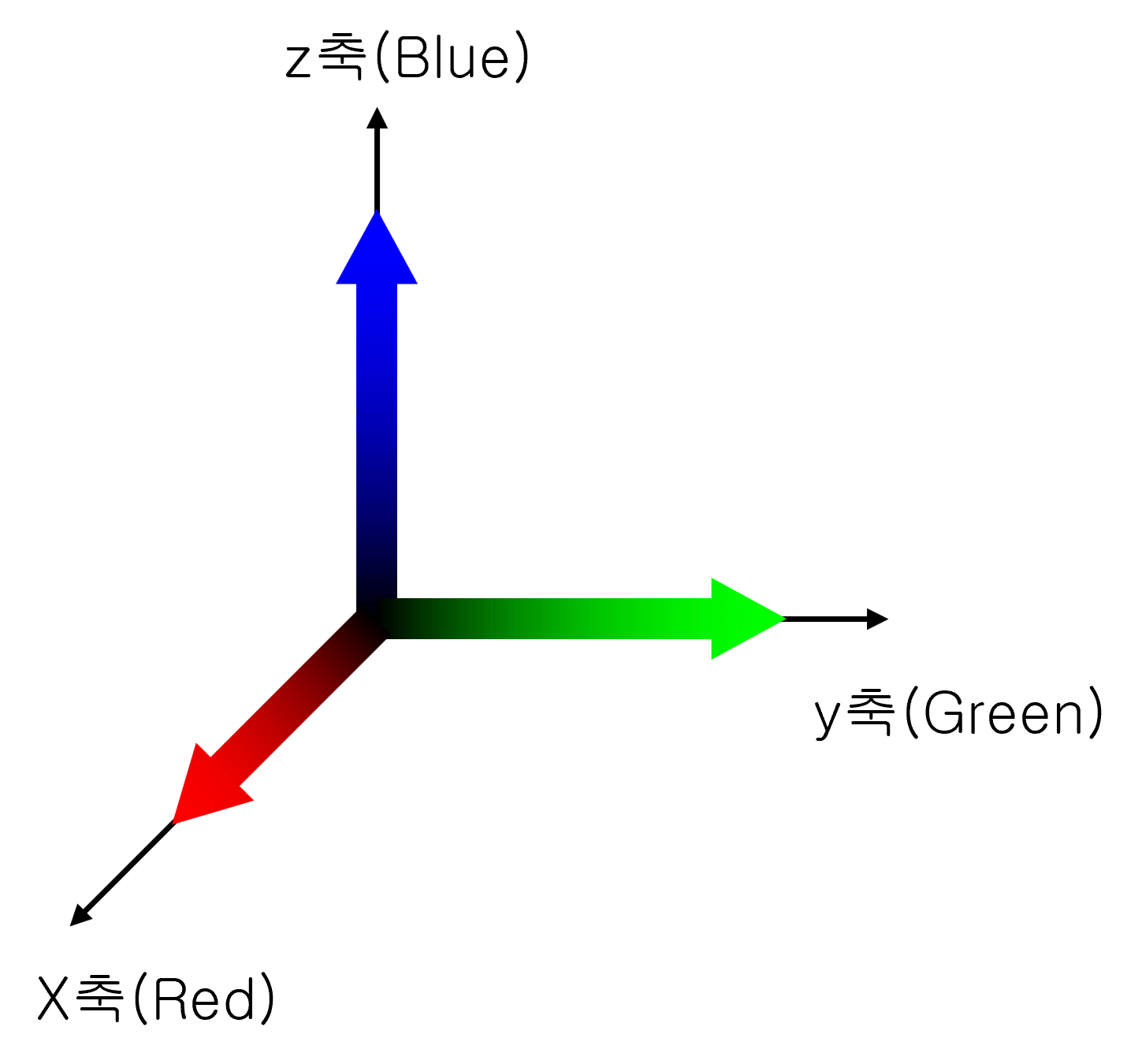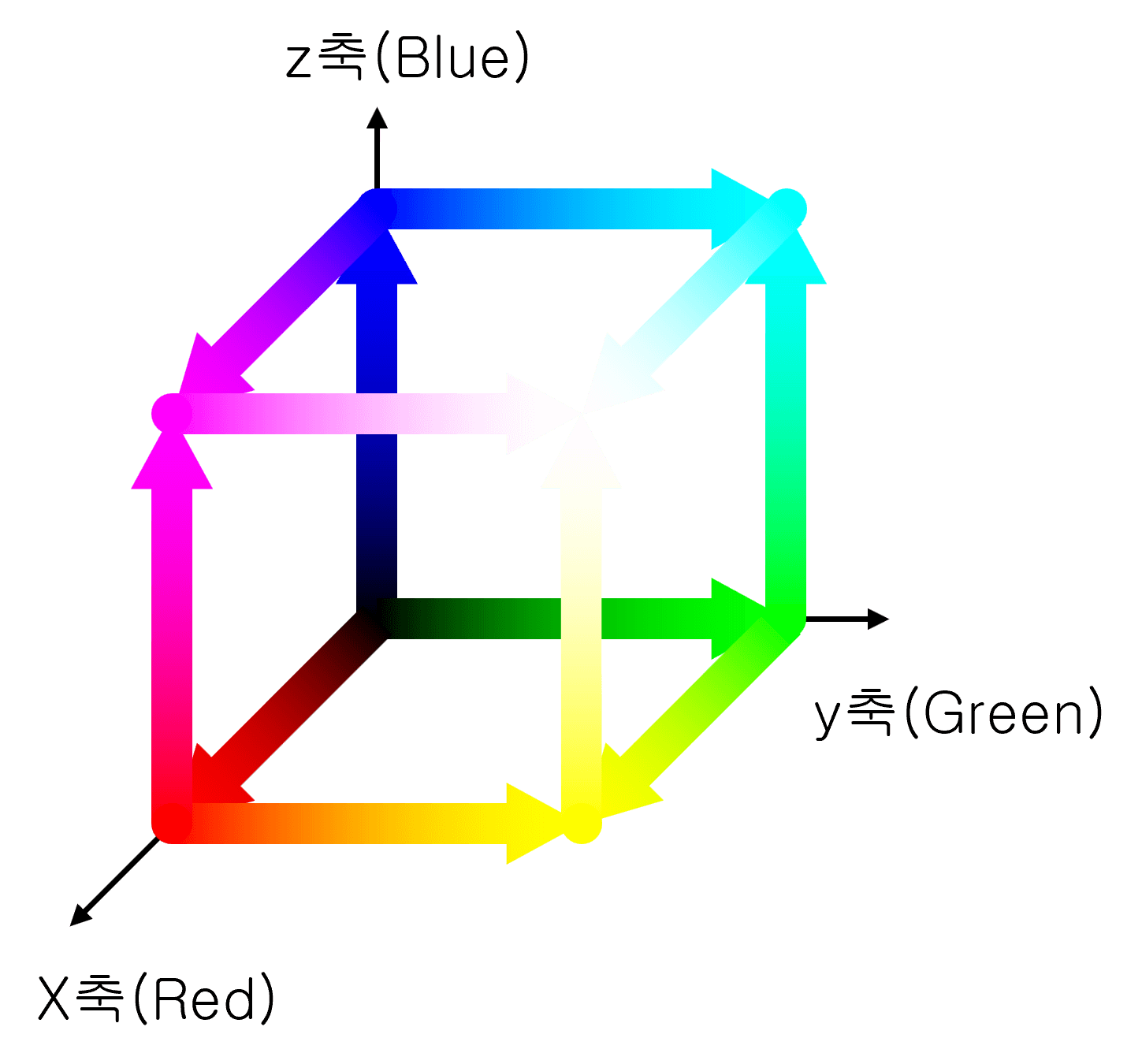The three primary colors of light are red, green, and blue.
Depending on how these three lights are mixed, different composite colors appear. For better understanding, let’s imagine a three-dimensional coordinate system with the x, y, and z axes.

Assuming that the x, y, and z axes are red, green, and blue, respectively, a point in the three-dimensional space is a mixture of three primary colors of light equal to the values of the x, y, and z coordinates.

for example,
In the state of ‘z = 0’, when red and green, which are the x and y axes, are mixed, it becomes yellow.
In the state of ‘x = 0’, when green and blue, which are the y and z axes, are mixed, it becomes cyan.
In the state of ‘y = 0’, when blue and red, which are the z and x axes, are mixed, magenta is obtained.
Gradation occurs according to the mixing ratio of the three primary colors.
Synthetic colors made by mixing two primary colors are used as essential pigments in printing. Color printers produce all visible colors by properly combining yellow (Y), cyan (C), and magenta (M) inks. Unlike light, the ink becomes darker and cloudy as it is mixed.

Light gets brighter as it is combined, so the result is white when all the lights are added together.
In aesthetics, white means purity, but in terms of optics, white is the least pure color.
Another interesting thing is, in the color cube above, pixels located opposite each other are complementary colors.